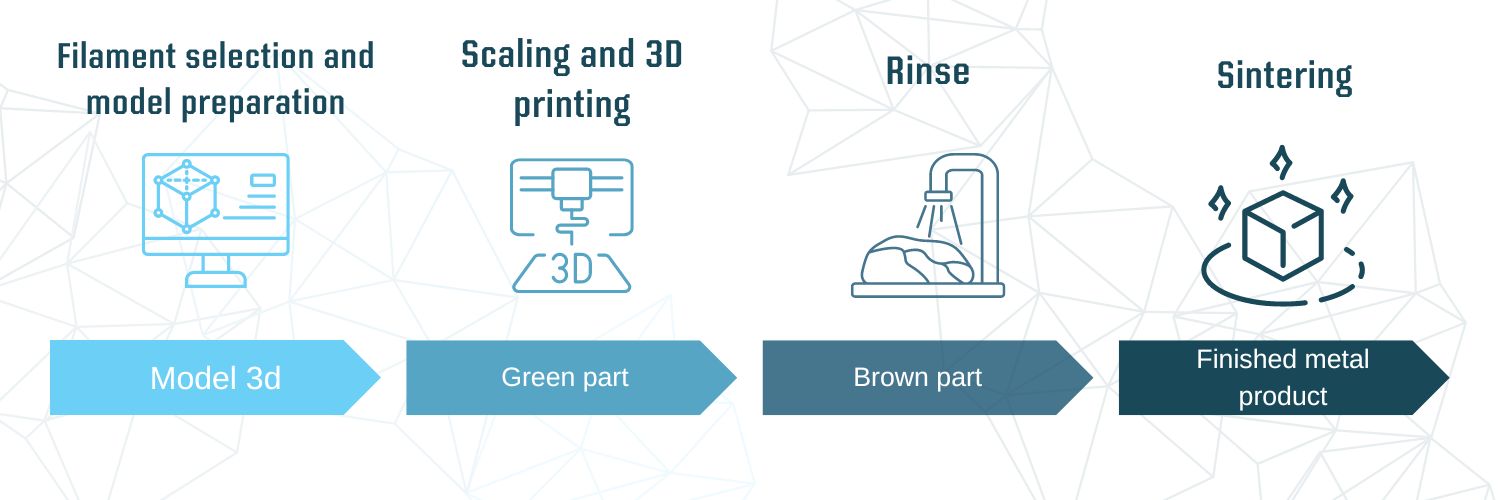FDM technology of metal
Innovative technology for producing metal parts using Fused Deposition Modeling technology. The printing material is composite filaments, in which metal powders are coated with a polymeric material. The technology for producing metal structures is divided into 4 main stages: modeling and scaling, printing, washing and sintering. In the first stage of the process, a 3D model of the component is prepared, which is then scaled to avoid significant dimensional and shape deviations after the sintering process. Subsequently, the scaled 3D model is printed on a 3D printer using FDM technology and subjected to the rinsing and sintering process. During the rinsing process, the plastic that served as the matrix in the composite filament is removed from the print (the green part). After the rinsing process, the so-called brown part is obtained, which is characterized by high porosity and brittleness, so immediately after rinsing the part is subjected to sintering. At a temperature of about 1380 °C, the metal powders fuse together to form the final part, accompanied by a large, anisotropic shrinkage of about 16% in the X and Y axes and 20% in the Z axis.














